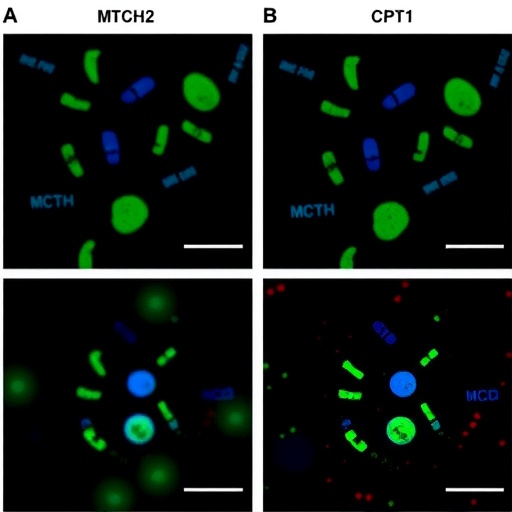People living in areas where they are consistently exposed to poor air quality may face substantial health risks over time. Recent research conducted by a team at the University of Basel, Switzerland, has revealed an alarming underestimation of the toxicity of airborne particulate matter. This study introduces crucial insights into the rapidly changing dynamics of particulate pollutants in the air we breathe, particularly focusing on highly reactive chemical components that may significantly impact human health.
For years, scientists have understood that fine particulate matter contributes to a variety of chronic health conditions. A wealth of studies has documented links between air pollution and respiratory issues, cardiovascular diseases, diabetes, and even neurodegenerative diseases like dementia. The World Health Organization attributes more than six million deaths annually to the adverse effects of these pollutants. However, the specific chemical composition and the reactivity of the particulate matter, which can derive from both human-made and natural sources, have remained complex and poorly understood.
Researchers have long emphasized the dangers posed by what are termed reactive oxygen species or oxygen radicals. These highly reactive compounds can engage in damaging interactions with biological molecules found within and on the surfaces of cells in the respiratory tract. This process induces oxidative stress, which triggers inflammatory responses that may affect not only the lungs but also multiple organ systems throughout the body.
Traditionally, scientists gathered particulate matter on filters before sending them for analysis, often resulting in delays stretching over days or even weeks. This lag in the measurement process has raised concerns within the scientific community, given that reactive oxygen species are known for their fleeting existence. According to Professor Markus Kalberer, an atmospheric scientist involved in the research, this time delay impacts the accuracy of understanding the dangers posed by these pollutants and the quantities present in the atmosphere.
The groundbreaking method developed by Kalberer and his colleagues allows for real-time measurement of particulate matter, enabling a more precise analysis of air quality. This new technique involves capturing airborne particles in liquid, where they are exposed to various chemicals. As a result, any reactive oxygen species present react rapidly, producing fluorescence signals that scientists can quantify almost immediately. This methodological leap enables researchers to capture data that accurately reflects the hazardous nature of particulate matter.
The study’s findings suggest that a staggering 60% to 99% of oxygen radicals can vanish within mere minutes or hours following their release into the atmosphere. This revelation fundamentally shifts the previous understanding of the composition of particulate matter, indicating that prior measurements have likely painted a distorted picture of the air quality and its health implications. Professor Kalberer emphasizes that the actual proportion of harmful substances in particulate matter is far greater than earlier estimates suggested.
An additional layer of complexity arises from laboratory experiments involving lung epithelial cells, which have demonstrated that the short-lived, highly reactive components of particulate matter provoke a significantly different and potentially more harmful inflammatory response than those previously analyzed using delayed methods. These findings underline the urgency of adopting accurate measurement techniques for airborne pollutants to enhance understanding and pave the way for developing more effective public health strategies.
The challenges encountered during this innovative research extend beyond the technological difficulties of creating a real-time measurement instrument. Systems capable of conducting autonomous and continuous chemical analyses need to operate seamlessly, both in controlled laboratory settings and in diverse field conditions. Each aspect of this study contributes to a comprehensive understanding of particulate matter’s composition and its profound implications for health.
As researchers continue to refine their measurement tools and techniques, the goal remains clear: to provide more accurate insights into the harmful components of particulate matter and their long-term effects on human health. The researchers envision that improved measurements will facilitate the creation of better protective measures to address air pollution, creating a healthier environment for vulnerable populations exposed to high levels of particulates.
In summary, the University of Basel’s recent study marks a significant advancement in air quality research, shedding light on the complexities and immediate dangers associated with particulate matter. This new understanding may ultimately lead to more informed public health policies aimed at mitigating the risks associated with air pollution, saving lives and improving health outcomes for millions worldwide.
Subject of Research: The reactivity and health impacts of short-lived reactive components in airborne particulate matter.
Article Title: Short-lived Reactive Components Substantially Contribute to Particulate Matter Oxidative Potential.
News Publication Date: 19-Mar-2025.
Web References: http://dx.doi.org/10.1126/sciadv.adp8100
References: Science Advances
Image Credits: University of Basel
Keywords: air pollution, particulate matter, reactive oxygen species, health risks, inflammation, respiratory diseases, cardiovascular health, environmental science.
Tags: air quality health riskscardiovascular diseases and air qualitychemical composition air pollutionchronic health conditions air pollutionhuman-made particulate pollutantsnatural sources of air pollutionneurodegenerative diseases and pollutionparticulate matter toxicityreactive oxygen speciesrespiratory issues from air pollutionUniversity of Basel researchWorld Health Organization air pollution deaths





